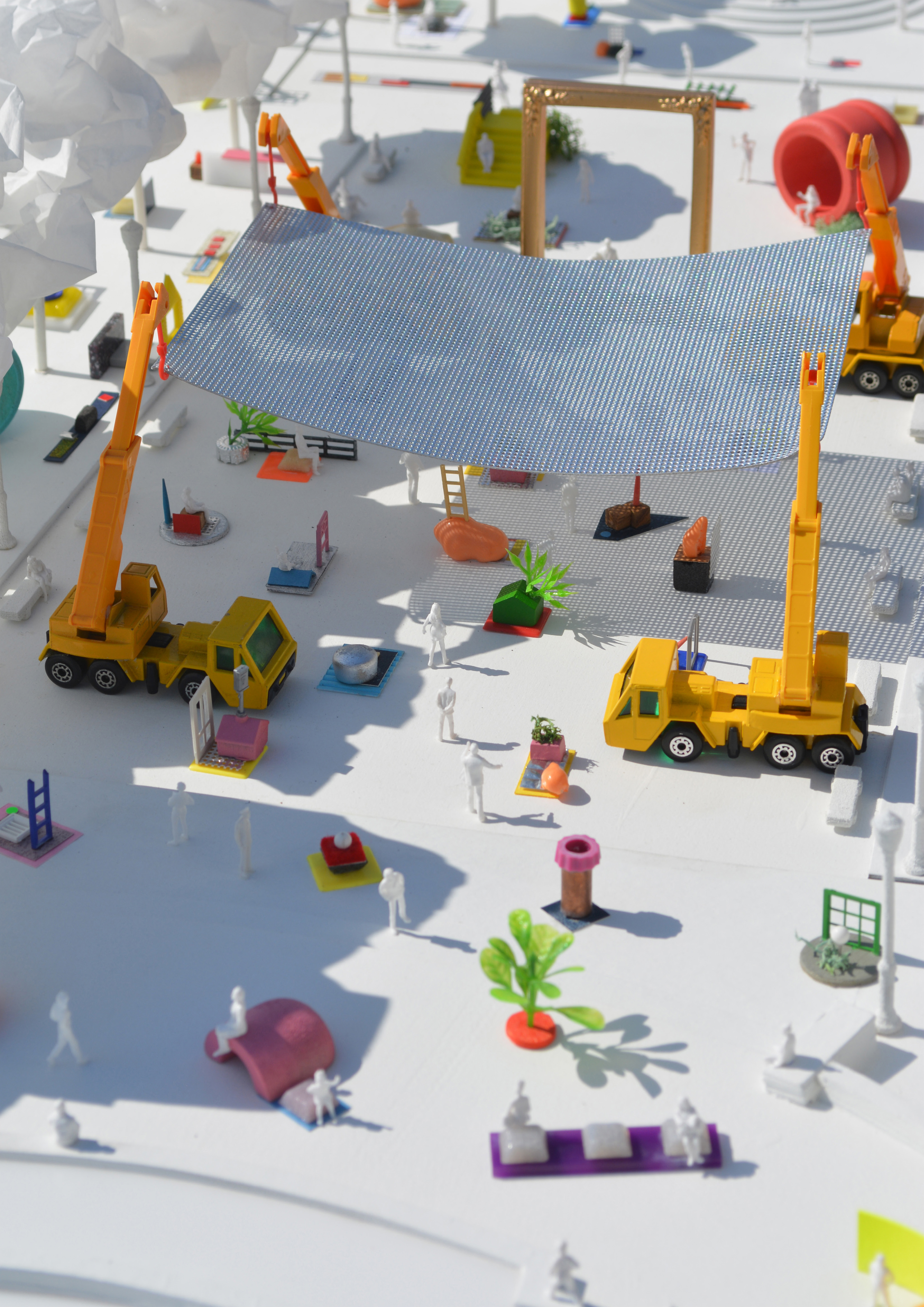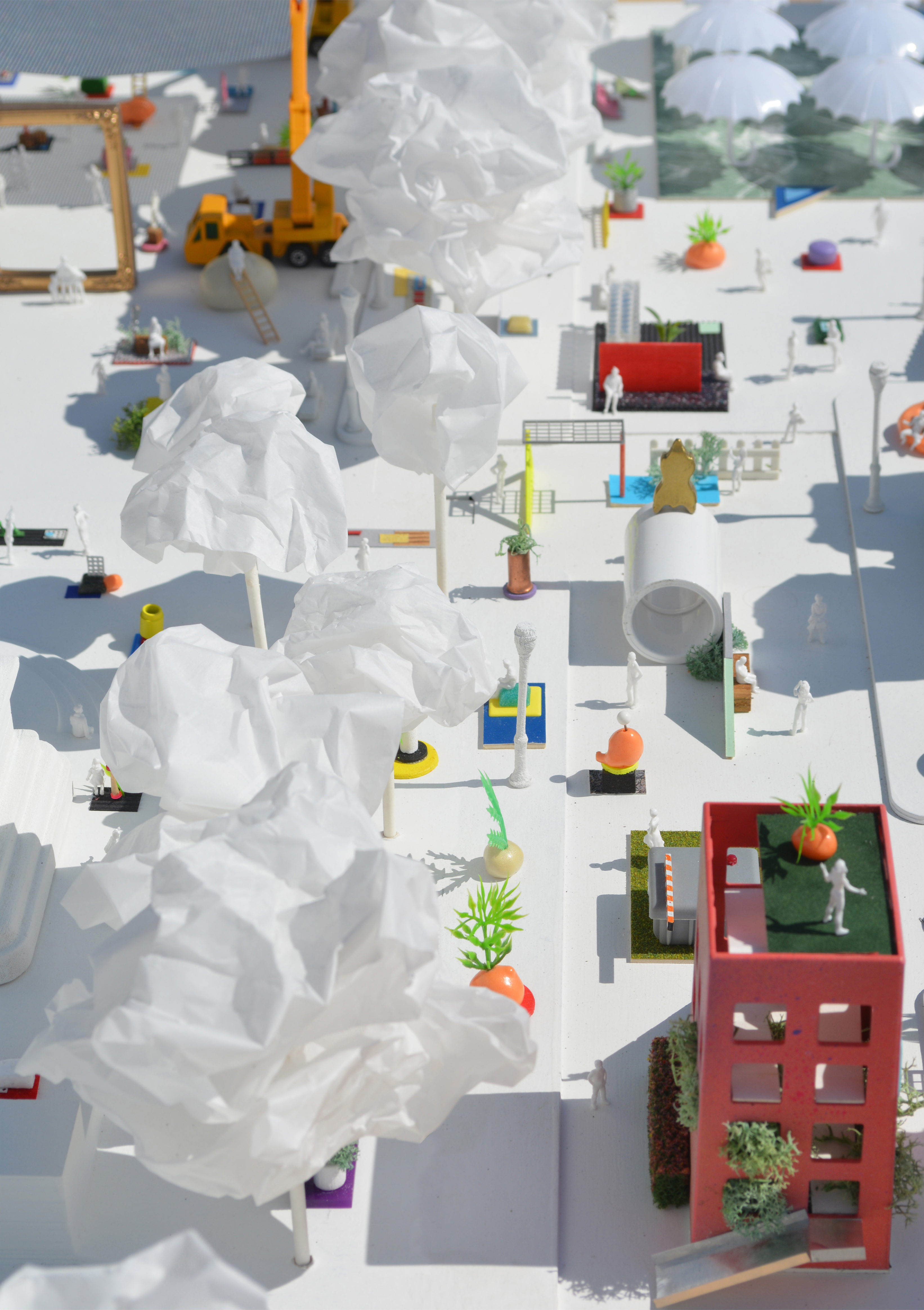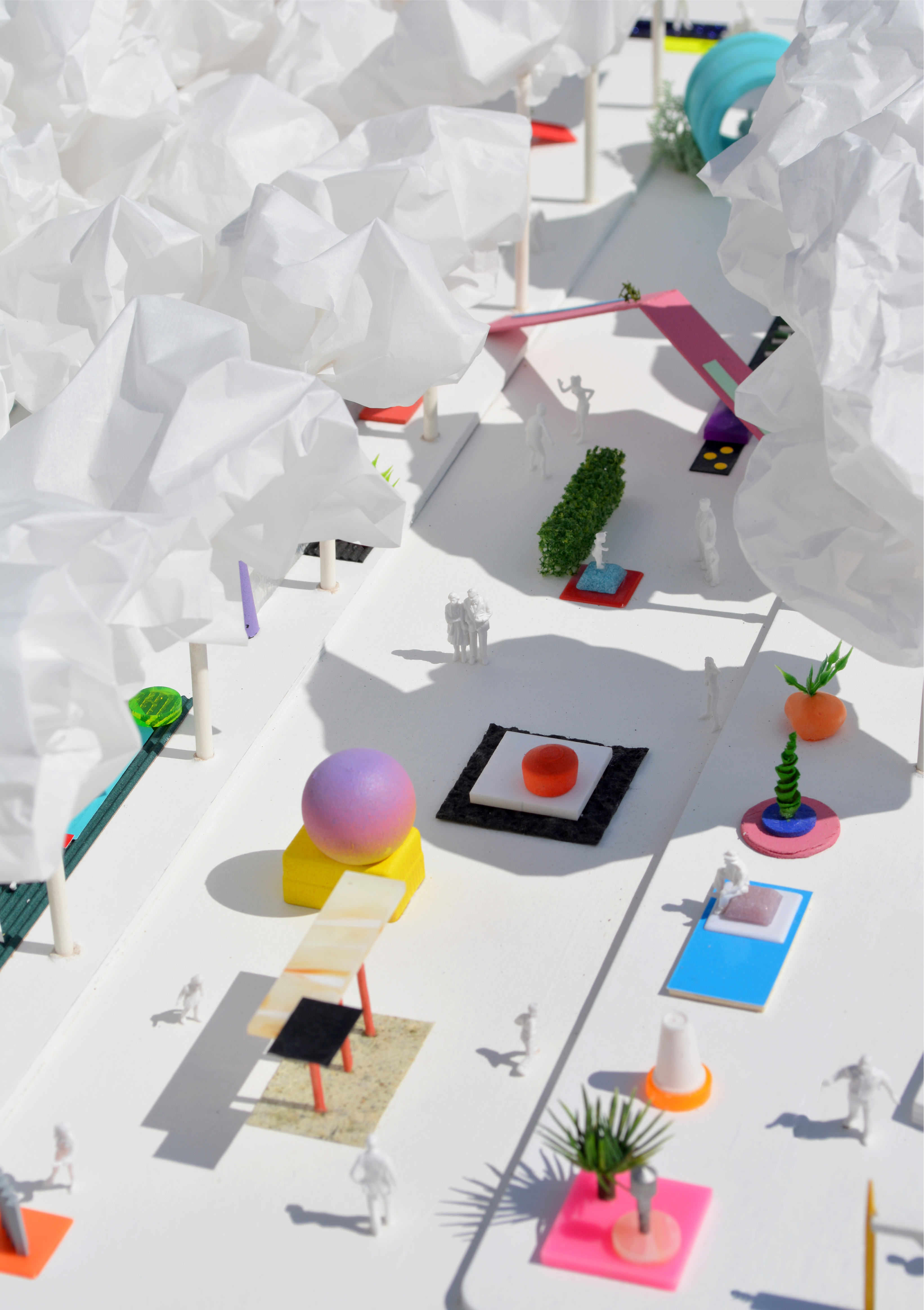
PLAZA DE ESPAÑA
Proposal for the Revitalization of Plaza de España, Madrid, Spain, 2016
Team: Andrew Kovacs, Yessenia Juarez, Israel Ceja, Peter Boldt
Project Description:
Concept
This proposal for the revitalization of Plaza de España calls for a number of micro-architectural interventions to be distributed loosely throughout the park. Through quantity, the distribution of such micro-architectural interventions scale Plaza de España down to make the park smaller, and therefore more pedestrian friendly, while offering new activities of leisure. These micro architectural interventions are a new densely packed landscape devoted to activities of leisure. In other words, we propose a masterplan of a scattered landscape over Plaza de España. The ambition is to turn Plaza de España into a lively destination point for both residents of Madrid as well as visitors to the city. We aim to make a new type of collective and leisure space that is pedestrian focused.
Activities
Each micro-architectural intervention contains a new leisure activity for Plaza de España. These activities range in degrees of usefulness from shading devices to colossal picture frames to take selfies. Activities of leisure to be implemented will be strolling, photographing, lounging, sunbathing, small botanical gardens, pools and water features, bike storage, sport courts, dog parks, children parks, shaded resting areas (for sitting or sleeping), viewing platforms, etc. Forms of leisure to be implemented will be pyramids, ziggurats, mounds, plinths, colonnades, hypostyle halls, stairways, strips, fields, gates, bridges, follies, pavilions, etc. The idea is to have micro-architectural interventions grouped in a dense quantity to allow for a new type of collective space that can occupy leftover, residual, underused, and undervalued spaces of Plaza de España. The goal behind each micro-architectural intervention is to have a small impact, with a large return for revitalizing the park.
Implementation
We propose to not alter the existing fabric of the park, but rather operate on it with a logic of additions. As such, embedded in the logic of these micro-architectural interventions is a phasing strategy for the implementation of the revitalization of the park. For example one intervention can be built at a time, in different locations of the park, and gradually over time additional micro-architectural interventions can be implemented. At the same time clusters of interventions can be built at once. The logic of the micro-architectural intervention also allows for new activities to be added as new activities are demanded. The goal is to gradually fill up the park, overtime, with activities that benefit and add to the culture of city life for the residents of Madrid and visitors alike.
Activities
Each micro-architectural intervention contains a new leisure activity for Plaza de España. These activities range in degrees of usefulness from shading devices to colossal picture frames to take selfies. Activities of leisure to be implemented will be strolling, photographing, lounging, sunbathing, small botanical gardens, pools and water features, bike storage, sport courts, dog parks, children parks, shaded resting areas (for sitting or sleeping), viewing platforms, etc. Forms of leisure to be implemented will be pyramids, ziggurats, mounds, plinths, colonnades, hypostyle halls, stairways, strips, fields, gates, bridges, follies, pavilions, etc. The idea is to have micro-architectural interventions grouped in a dense quantity to allow for a new type of collective space that can occupy leftover, residual, underused, and undervalued spaces of Plaza de España. The goal behind each micro-architectural intervention is to have a small impact, with a large return for revitalizing the park.
Implementation
We propose to not alter the existing fabric of the park, but rather operate on it with a logic of additions. As such, embedded in the logic of these micro-architectural interventions is a phasing strategy for the implementation of the revitalization of the park. For example one intervention can be built at a time, in different locations of the park, and gradually over time additional micro-architectural interventions can be implemented. At the same time clusters of interventions can be built at once. The logic of the micro-architectural intervention also allows for new activities to be added as new activities are demanded. The goal is to gradually fill up the park, overtime, with activities that benefit and add to the culture of city life for the residents of Madrid and visitors alike.




